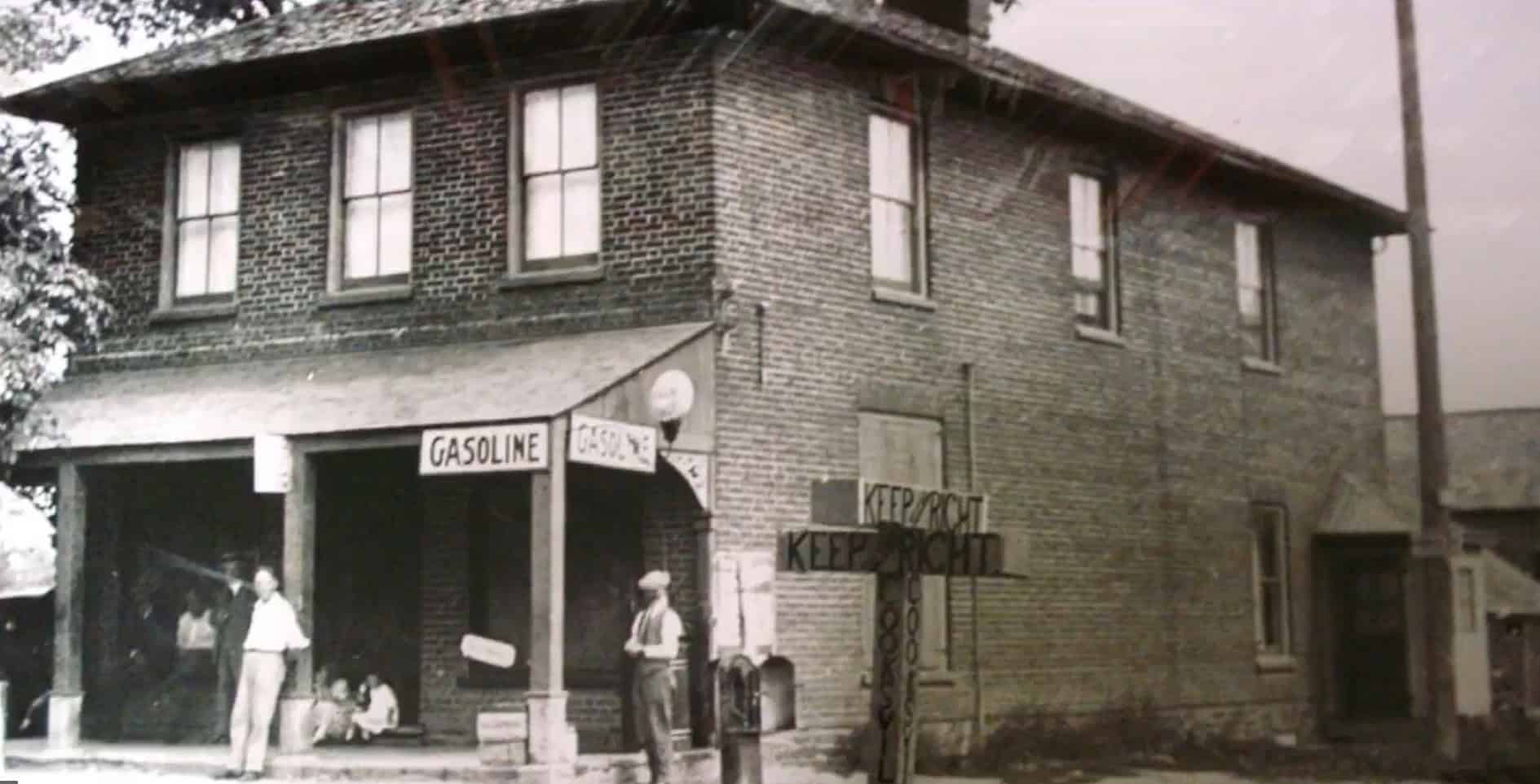First gas pump in the area is part of rich history of this old building in Mississauga
Published May 10, 2024 at 1:51 pm

One of Mississauga’s oldest commercial buildings has taken many shapes and provided a variety of services to the public over the past 200 years or more.
Included in the rich history of this red brick building that still stands today on the southeast corner of Hurontario and Dundas streets in Cooksville is that it was the site of the first gas pump in the area that came to be known as Mississauga.
These days doing business as a Min-A-Mart variety store, the structure was once home to “historic Mississauga’s first gas pump, installed in 1911,” according to City of Mississauga officials.
Standing in its current form for some 170 years, though the lot’s history dates back to 1809 when historical records show a store “may have been located on this spot,” city officials note, the building is “the oldest surviving structure in Cooksville and one of Mississauga’s oldest commercial structures.”
Given its significance to the story of Mississauga’s past, the property is under review by city officials for heritage designation. Such designation provides clarity as to the cultural importance of a given property.

The historic store as it stands today near the southeast corner of Dundas and Hurontario streets. (Photo: City of Mississauga)
“Heritage properties play a crucial role in bringing sense of place and community to the city,” Jodi Robillos, Mississauga’s commissioner of community services, told insauga.com.
“Cooksville is part of the dynamic, modern city of Mississauga, but like all of Mississauga, it has a rich and interesting history. Historical records show this property operated as a store as far back as 1809. Over 200 years later, the property is still standing and houses a store — a reminder that while Mississauga is always growing, evolving and embracing change, it is also a place that respects its roots and its neighbourhoods.”
Huge fire changed the Cooksville landscape
According to information gathered earlier by the city’s Heritage Advisory Committee, the Cooksville fire of 1852 would have destroyed any structure that previously existed on the site.
On May 26 of that year, fire swept across the Cooksville community. The blaze started at Belcher’s Blacksmith shop, according to the Cooksville BIA, and consumed 35 houses and businesses, 16 barns and four stables.
“Little of the village survived,” according to the BIA.
As the area was rebuilt, what would many decades later become Copeland General Store (Copeland-Cook Store) was immediately reconstructed in 1852 using red bricks and under the watchful eye of the building’s owner, Jacob Cook.
“Jacob (Cook) oversaw the operation of the store among his many other enterprises until his death in 1873,” a 2009 Heritage Advisory Committee report reads.

A wider look at the historic store and the intersection of Dundas and Hurontario streets.
From that point forward, historical records put the site/building’s ownership in several different hands:
- brothers George and John McClelland, whose family settled in Cooksville in 1873 after arriving from Ireland one year earlier, made an agreement with Jacob Cook’s son, Miles Washington Cook, to rent the store. George married Anna Langdon, Jacob Cook’s great niece, and the couple then lived in the apartment above the store. George McClelland subsequently bought the store outright
- in 1910, McClelland sold the store and grocery business to Alfred Scott, who renamed the business Scott’s Grocery. Under his ownership, the store had the first gas pump in the area installed in 1911
- in 1912, Scott sold the store to William Copeland, of Pucky’s Huddle (Tomken and Burnhamthorpe roads area of present-day Mississauga). The Copeland family lived in the building and ran the store on the first floor, renaming the business Copeland’s General Store (or the “Copeland Block,” according to city records). In addition to groceries, the store also sold feed
- Copeland continued to operate the gas pump as part of the business and as more and more cars began to appear on the scene, he sold the corner lot in 1922 (or at some point after that) to the British American Oil Company. In order to continue the grocery business, the store was moved 80 feet to the east in 1927, using rails that were slid underneath it and horses to move it
- after William Copeland’s death in 1948, his son, Charles, took over the business along with his sisters. In 1952, Charles Copeland had an adjacent structure built to help house the growing business









